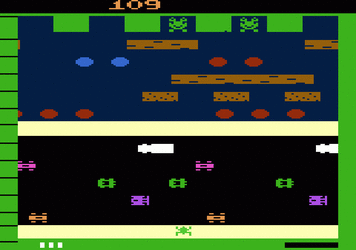Here are some DDR3 sticks seen in demo at CeBit
* Gskill DDR3 512 Mo PC3-6400 6-6-6-15 1.5 volts
* A-DATA 1024 Mo PC3-8500 7-7-7-20
* Team Group 1024 Mo PC3-8500 5-5-5-15 1.8 volts
* Corsair 1024 Mo PC3-8500 CL6
* Patriot 1024 Mo PC3-8500 5-5-5
* Nanya 512 Mo PC3-6400 5-5-5 1.5 volts
* Nanya 1024 Mo PC3-6400 5-5-5 1.5 volts
* Nanya 1024 Mo PC3-8500 7-7-7 1.5 volts
* Elixir 1024 Mo PC3-8500 7-7-7 1.5V (Nanya)
Keep in mind this is the 1st generation. Timings will get tighter, and fast. I have CL4 DDR2-800 that I bought a year ago (which caused a lot of people at my job when the sticks arrived to go OMGWTF?), now CL3 with DDR2-800 is possible to find (or get through overvoltage).
1333 GHz is due in a few months (probably this Q), and as we see many manufacturers managed to land timings under the "specified normal settings" which are CL6 for DDR3-800, CL7 for DDR3-1066 and CL8 for DDR3-1333, and probably CL9 for DDR3-1600. I bet CL6 DDR3-1333 will be available at a decent price point in Q1 2008 (which is when I plan my upgrade, PenD 805 was a fun toy but now it lacks, and I don't even use all my stupid RAM because 4GHz is too noisy for me), and if OCZ, Corsair and Team keep going with the rate DDR2 is overclockable we will see some sick memory speeds popping up. And as it has been seen, higher speed ends up more important than tight timings just because of the bandwidth.
So, DDR3-1066 at CL5 already exists (availability is another thing, but with the release of the P5K3 and other goodies it shouldn't be too long), which would already be quite performant memory (especially since the voltage is so low compared to DDR2 and DDR1, which means "OCing!++"). I've seen on extremeoc forums DDR3-1066 engineering samples hit 1400GHz, so future is looking good.
On timings being looser on DDR2 and DDR3, well, it's a silicon matter. Timings as fast as DDR1 on a chip running 3 times as fast means that unless you bump the voltage enough to kill all transistors in sight, the info will be far from clear for the chip to understand and all hell will break loose. Better chips are being made every day, with the result that the voltage required for the DDR2 to run well gets closer and closer to DDR1 volts (Kingston 1200MHz DDR2 CL5 chips that need 2.35V to just work, anyone?). DDR3 is set to work on 1.5v. DDR2 was set to work on 1.8v.
Anyway, as manufacturing processes mature, it's possible to hit some pretty sick performance out of the same silicon. As seen, DDR2 didn't give an upgrade over high end DDR1 until quite recently when DDR2 prices got to the ground and high end DDR2 sticks got affordable, stable, and crazy OCable. But even now there is questions over if DDR2 is truly an upgrade worthy enough to switch.
DDR3 will kick that up a notch. Of course, the first stuff will suck. Remember CL5 DDR2-533? Laughable. If DDR3 manages to start with such timings as seen at CeBit (although the sticks on sale are very loose, and wouldn't give an upgrade over even mid range DDR2 sticks, or high end DDR1), then DDR3 will become an upgrade worth looking at pretty darned soon. It is expected that DDR3 will be the main memory for new systems in 2009 (the switch being made in 2008), so it being a mature memory platform will probably not happen before mid 2008.
CL7 DDR3-1066 sucks, yes. The DDR3 manufacturing processes suck too much to start aggressively sell low latency memory, as the yeilds would be horrible, but as the manufacturing gets better, and DDR3 gets more known and fabricated un bigger quantities, we'll start seeing some great things. It'll be just like DDR2.
I guess I answered the question, although I got on an enormous tangeant ^^.


